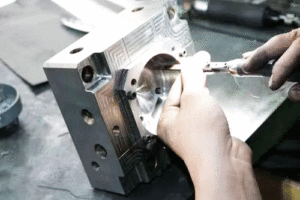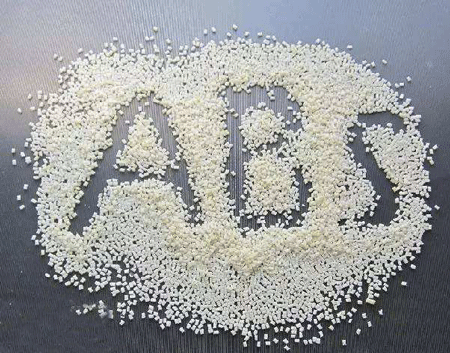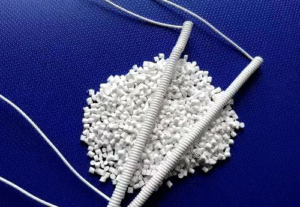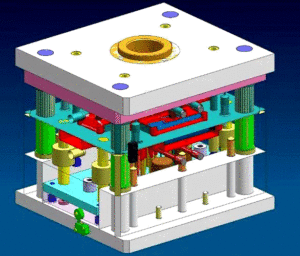
Polishing Treatment for Plastic Molds
Polishing Treatment for Plastic Molds With the widespread application of plastic products, such as daily-use items and beverage packaging containers, there is often a requirement
Reducing the internal stress of products is the key to heat-resistant ABS injection molding. This article shows some processing points for the molding of heat-resistant ABS resin from five aspects. They are mold design, material drying, molding temperature, holding pressure and time, and mold temperature.
The heat resistance of ordinary ABS is not good enough. Now, a series of heat-resistant ABS resins have been developed by adding heat-resistant agents such as ɑ-methylstyrene copolymer and N-phenylmaleimide copolymer. The heat distortion temperature (HDT) is 90-120℃.
The molecular structure of the heat-resistant ABS contains a highly rigid benzene ring and N-phenyl group. While improving the heat resistance, it also increase the steric hindrance effect of the molecular chain. What’s more, it reduces the relaxation speed of the molecular chain and tend to produce large internal stress in products. And that leads to defects like stress cracking, stress whitening and brittleness. Therefore, reducing the internal stress of products is the key to heat-resistant ABS injection molding.
The product wall thickness must be uniform. And the wall thickness difference of ABS products should be controlled within 25% to prevent local stress concentration caused by excessive wall thickness difference. The root of the weaker column needs to increase the R angle or add reinforcing ribs to prevent the column from breaking.
For the buckle design, the root of the buckle needs a chamfered R angle. The size of the R angle depends on the wall thickness of the product. The ratio of the R angle to the wall thickness should be more than 0.3. As this ratio increases, the internal stress gradually decreases. But we also need to consider the surface shrinkage of the product. The design of the cooling water channel should ensure the uniformity of cooling. So it can avoid the internal stress caused by uneven cooling and uneven shrinkage.
Generally, the heat-resistant ABS resin will absorb moisture in the air during storage and transportation. The water absorption rate changes with the air humidity, generally between 0.2 and 0.4%. So we must fully dry the material to reduce the moisture content of it to less than 0.05%, preferably less than 0.02%. Otherwise surface defects such as water splash and silver wire may occur. The drying temperature of the heat-resistant ABS resin is higher than that of ordinary ABS. It’s usually 80-95℃ and the drying time is 3-4 hours.
The molding temperature is a parameter that needs special attention during the processing of heat-resistant ABS. Its setting is based on ensuring that the heat-resistant ABS is sufficiently plasticized. We should use the temperature range with the upper middle value of the molding temperature recommended by the supplier. The increase of the temperature will obviously reduce the viscosity of the heat-resistant ABS. Besides, it also increases the fluidity of the resin, and makes the flow distance longer, Therefore, it can ensure that the material has sufficient filling capacity.

For heat-resistant ABS, whether the setting of holding pressure and time is reasonable, it will directly affect the internal stress of the part. The increase of holding pressure will make the molecular gap smaller. Also, the range of segment movement reduce and the volume of the melt reduce. Moreover, the density increase, and the force between the molecules increase. That can improve the shrinkage problem and internal quality of the product. But it will make the internal stress larger. Thus, try to choose a lower holding pressure as far as possible on the premise of ensuring the appearance quality of the product.
The pressure holding time is set when the gate completes its solidification as it cools, the screw advances and no longer exerts pressure on the molded product. If the pressure holding time is too long, it is easy to overfill the material. Besides, the molecular gap becomes smaller with the internal stress becoming larger. If the pressure holding time is too short, the product is prone to shrink and the size is unstable. Thus, the best holding time should be based on the shortest time when the product weight no longer changes .
When molding heat-resistant ABS, we should use a mold temperature controller. The recommended mold temperature is 60-80℃. Higher mold temperature tends to produce good flow, higher weld line strength, and less product internal stress. But the molding cycle will be prolonged appropriately.
If the mold temperature is lower than the recommended temperature, the internal stress of the product will be too high. And that will reduce the performance of the product. What’s worse, product may be brittle, screw hole or paint may crack.

Polishing Treatment for Plastic Molds With the widespread application of plastic products, such as daily-use items and beverage packaging containers, there is often a requirement

Injection Molding Techniques for TPE and TPR Injection Molding Techniques for TPE and TPR 1. Dry the TPE and TPR material before injection molding It

Winter Maintenance Measures for Injection Molding Machines As winter approaches and temperatures gradually drop, a cold chill envelops the earth. While ensuring personal warmth, it

Assessment Regulations for Mold Trial Exceeding 3 Times Assessment Regulations for Mold Trial 1. Purpose The purpose of this regulation is to standardize the work of